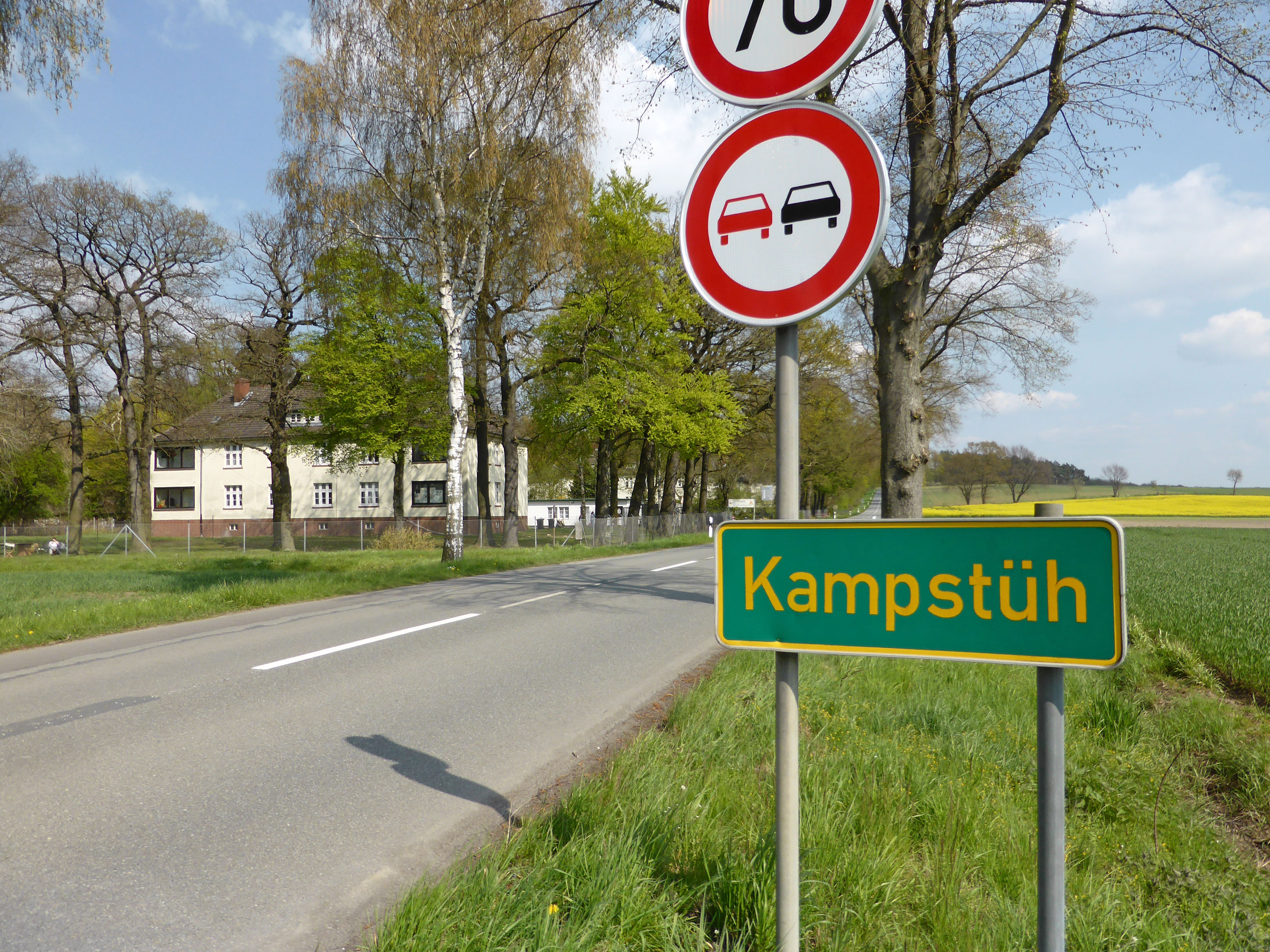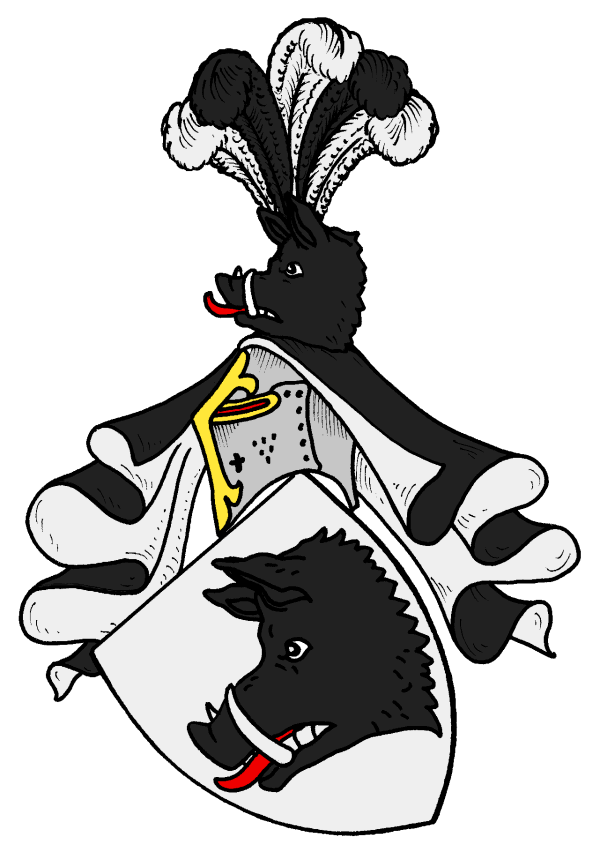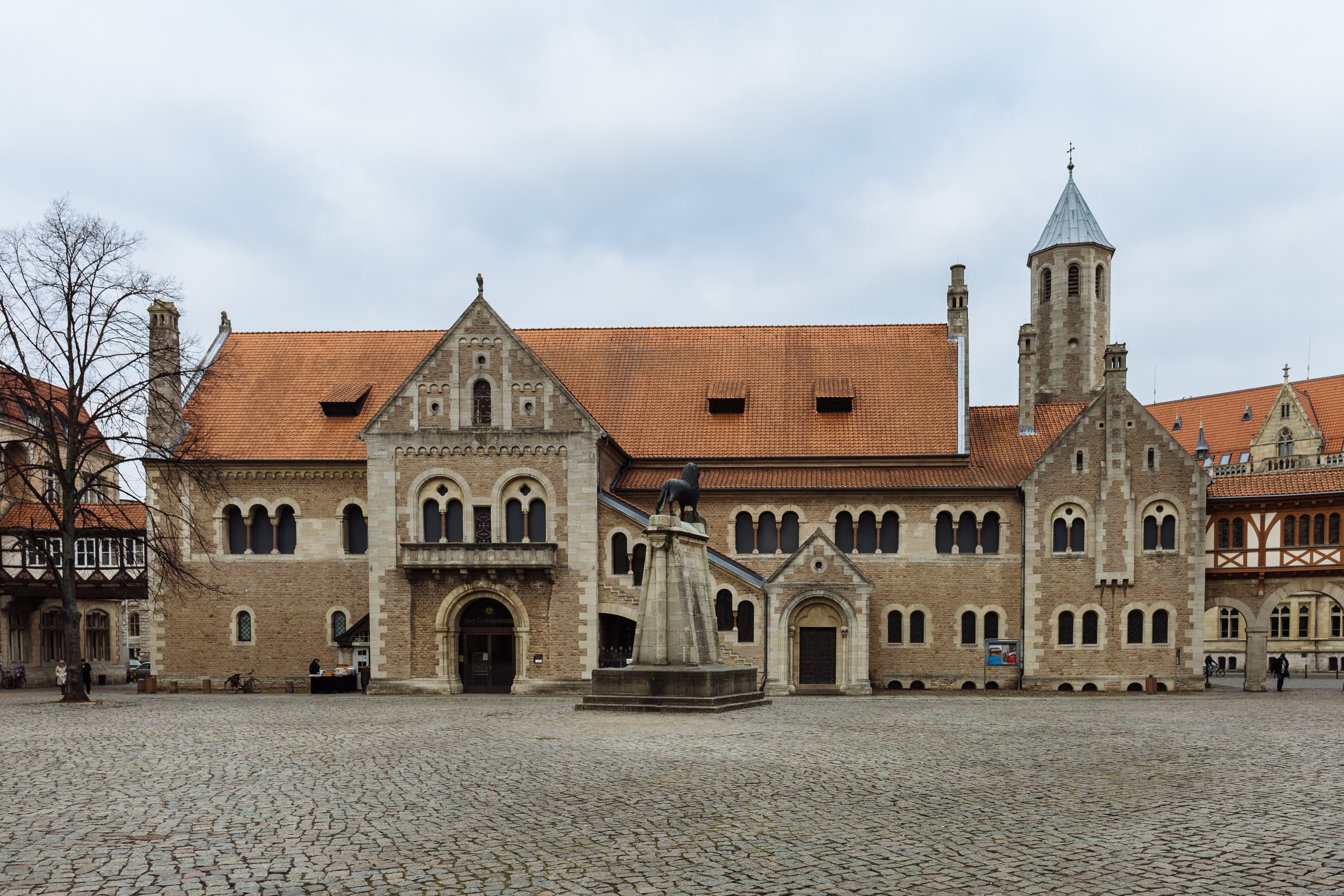|
Lehre
Lehre is a municipality in the district of Helmstedt, in Lower Saxony, Germany. The current population is 11,539 and is situated approximately southwest of Wolfsburg, and Braunschweig. The municipality received the name of Lehre on June 10, 888 and is made up of eight surrounding villages. They are Beienrode, Essehof, Essenrode, Flechtorf, Groß Brunsrode, Klein Brunsrode, Lehre, and Wendhausen with Lehre being the largest. History In 1934, construction began on the Army Ammunition Institute in the Kampstüh Forest east Lehre. More than 100 buildings on were constructed and was connected to the railway system. The Institute produced ammunition for infantry weapons, anti-tank mines, tank shells, artillery guns and .38 cm. Up until February 1945, 6,000 tons of chemical weapons were transported to the Institute. It was not bombed during World War II and up until the end war, most of these weapons remained on site. In 1945, the location also housed Russian prisoners of ... [...More Info...] [...Related Items...] OR: [Wikipedia] [Google] [Baidu] |
Holy Cross Church, Lehre
, image = Lehre Kirche.JPG , imagesize = , imagelink = , imagealt = , caption = , pushpin map = Germany Lower Saxony#Germany , pushpin label position = bottom , pushpin map alt = , pushpin mapsize = , map caption = , coordinates = , location = Mühlenwinkel 1, Lehre , country = Germany , denomination = Lutheran , previous denomination = Catholic , membership = , attendance = , website = , former name = , bull date = , founded date = , founder = , dedication = , dedicated date = , status = parish church , functional status = active , heritage designation = , designated date = , architect = , architectural type = aisleless c ... [...More Info...] [...Related Items...] OR: [Wikipedia] [Google] [Baidu] |
Wendhausen Windmill
The Wendhausen Windmill (German: ''Windmühle Wendhausen'') is a tower mill located in Wendhausen, a town within the municipality of Lehre, Lower Saxony, Germany. Built in 1837, it is the only five-sailed windmill in Germany still in operation. History Watermill Prior to 1837, a watermill was located on the Schunter River that flows through Wendhausen. Records show that a watermill was in use as early as 1491 in Wendhausen. The mill had three pairs of millstones. Windmill In 1837 brothers Carl and Eduard Vieweg, publishers from nearby Braunschweig, replaced the Schunter watermill with a nearby windmill. They wanted to build a paper mill to produce paper for their own publishing house and to have it powered using the wind. The brothers were given permission to build the windmill as long as, within one year, they provided as much mill grinding capacity for the Wendhausen area as they had with the three millstones from the watermill. A Dutch-style windmill with five sails wa ... [...More Info...] [...Related Items...] OR: [Wikipedia] [Google] [Baidu] |
Wendhausen Castle
The Wendhausen Castle is a 17th-century moated castle located in Wendhausen, a community within the municipality of Lehre, Lower Saxony. Description The castle is built in a Renaissance style surround by a large moat. The moat has an oblong shape with the castle being at the far eastern end. The western area within the moat was part of a beautiful and ornate gardens. History The first mention of a moated castle at this location was in 1325 and was in the possession of the Duke of Braunschweig. Throughout its early history, it has numerous owners and was repeatedly burned. In 1602, the castle was completely destroyed. In 1682, the property was given to as compensation for services by Braunschweig-Wolfenbüttel Duke Rudolf August and his younger brother Duke Anton Ulrich. A water tower was constructed the same year. Probst, the Chancellor of the Principality of Brunswick-Wolfenbüttel, began building the Renaissance-style castle on the foundations of the moated castle ... [...More Info...] [...Related Items...] OR: [Wikipedia] [Google] [Baidu] |
Essenrode Manor
The Essenrode Manor in Essenrode, a town within the municipality of Lehre, Lower Saxony, was built by Gotthart Heinrich August von Bülow in 1738. Description The mansion is built in a late Baroque style surrounded by a small English-style park. The park grounds are surrounded by a moat that once included a drawbridge, which was part of earlier fortifications built in 1337. To provide extra protection, these fortifications were constructed and surrounded by outbuildings. History The property has been owned by three different families throughout its history. From 1337 to 1625 it was owned by the ''von Garssenbüttel'' family. In 1627, ownership was transferred to the aristocratic family von Bülow, who controlled the property for the next 210 years (1627 to 1837). The von Bulow's built the current mansion as it is today. Former Prussian, Kingdom of Westphalia and Duchy of Magdeburg politician, Hans, Count von Bülow, was born here in 1774. In 1750, Karl August von Hardenberg, ... [...More Info...] [...Related Items...] OR: [Wikipedia] [Google] [Baidu] |
Essehof Zoo
Essehof Zoo (German: ''Tierpark Essehof'') is a privately owned and operated zoo located in Essehof, a town within the municipality of Lehre, Lower Saxony, Germany. It opened in 1968 and currently consists of . It is located about northeast of Braunschweig. Zoo Werner Beller officially opened the zoo on Good Friday in 1968 and the zoo has continued to grow since then. In 1974 a new coffee house was built, followed by construction of new animal stalls and enclosures between 1976 and 1978. In 1988 a new monkey house was completed. The zoo was purchased by Uwe Wilhelm GmbH in 1991 and continues to run as a privately owned zoo. Following the change in ownership, renovations and additions continued to increase the number of exhibits. A water nature trail that is unique to northern Germany was opened in 2002 that included an underwater viewing area below the surface of the water as well as a long wooden bridge. An Australian exhibit was opened and the deer park was renovated ... [...More Info...] [...Related Items...] OR: [Wikipedia] [Google] [Baidu] |
Campen Castle
Campen Castle (german: Burg Campen) is a partially standing lowland castle built in the late 13th century in Flechtorf, a town within the municipality of Lehre, Lower Saxony. Description The castle is located on an slightly elevated plateau just south of the historic Flechtorf town center. It lies between the Schunter River and a small canal used to transport water for a mill and was also surrounded by a moat. The size of the plateau was about by from the northwest corner to the southwest corner. A description from 1754 indicate the main part of the castle was shaped like an irregular hexagon. The grounds also included a cavalier house, gatehouse, pleasure garden and prison. On the plateau, only a few remaining structures of the former castle have been preserved. Part of the royal house dating to the 16th century, built by Duke Wilhelm the Younger, which has a stone ground floor and an attached half-timbered structure, is still standing. Around 1800, much of the castle ... [...More Info...] [...Related Items...] OR: [Wikipedia] [Google] [Baidu] |
Karl August Von Hardenberg
Karl August Fürst von Hardenberg (31 May 1750, in Essenrode- Lehre – 26 November 1822, in Genoa) was a Prussian statesman and Prime Minister of Prussia. While during his late career he acquiesced to reactionary policies, earlier in his career he implemented a variety of Liberal reforms. To him and Baron vom Stein, Prussia was indebted for improvements in its army system, the abolition of serfdom and feudal burdens, the throwing open of the civil service to all classes, and the complete reform of the educational system. Family Hardenberg was the eldest son of Christian Ludwig von Hardenberg (1700-1781), a Hanoverian colonel, later to become field marshal and commander-in-chief of the Hanoverian army under King George III from 1776 until his death. The mother was Anna Sophia Ehrengart von Bülow. He was born, one of 8 children, at Essenrode Manor near Hanover, his maternal grandfather's estate. The ancestral home of the ''knights of Hardenberg'' is Hardenberg Castle at N� ... [...More Info...] [...Related Items...] OR: [Wikipedia] [Google] [Baidu] |
Helmstedt (district)
Helmstedt is a district in Lower Saxony, Germany. It is bounded by (from the west and clockwise) the district of Wolfenbüttel, the City of Braunschweig, the District of Gifhorn, the City of Wolfsburg and the State of Saxony-Anhalt (districts of Börde and Harz). Geography The district is bounded by the Elm (a hill chain) in the west and the Lappwald (a riparian forest) in the east. Large parts of the district are part of the ''Elm-Lappwald Nature Park''. History In the Elm limestone was mined in medieval times; limestone from the region was used for the tomb of Henry the Lion as well as for the imperial cathedral of Königslutter. In the Middle Ages Königslutter was among the most wealthy cities of the Holy Roman Empire. In 1576 the University of Helmstedt was founded, which was the largest university of protestant Germany. The Duchy of Brunswick (deriving from Brunswick-Lüneburg) created administrative districts (''Kreise'') in 1833; the District of Helmstedt was one of t ... [...More Info...] [...Related Items...] OR: [Wikipedia] [Google] [Baidu] |
Braunschweig
Braunschweig () or Brunswick ( , from Low German ''Brunswiek'' , Braunschweig dialect: ''Bronswiek'') is a city in Lower Saxony, Germany, north of the Harz Mountains at the farthest navigable point of the river Oker, which connects it to the North Sea via the rivers Aller and Weser. In 2016, it had a population of 250,704. A powerful and influential centre of commerce in medieval Germany, Brunswick was a member of the Hanseatic League from the 13th until the 17th century. It was the capital city of three successive states: the Principality of Brunswick-Wolfenbüttel (1269–1432, 1754–1807, and 1813–1814), the Duchy of Brunswick (1814–1918), and the Free State of Brunswick (1918–1946). Today, Brunswick is the second-largest city in Lower Saxony and a major centre of scientific research and development. History Foundation and early history The date and circumstances of the town's foundation are unknown. Tradition maintains that Brunswick was created through t ... [...More Info...] [...Related Items...] OR: [Wikipedia] [Google] [Baidu] |
Bundesautobahn 2
is an autobahn in Germany that connects the Ruhr area in the west to Berlin in the east. The A 2 starts at the junction with the A3 near the western city of Oberhausen, passes through the north of the Ruhr valley, through the Münsterland and into Ostwestfalen, crossing the former inner German border and continuing through the Magdeburger Börde to merge into the Berliner Ring shortly before reaching Berlin. Major cities such as Magdeburg, Braunschweig, Hannover and Dortmund are situated very close to the A 2. The A 2 is one of the most important autobahns, connecting several large industrial areas with each other. The A 2 was modified in the late 1990s, and completely rebuilt in the former East Germany. All of the A 2 has 3 travel lanes and a breakdown lane in each direction. History The highway was planned between September 1933 and December 1934 by the construction departments of the company Reichsautobahn in Düsseldorf, Hanover and Mer ... [...More Info...] [...Related Items...] OR: [Wikipedia] [Google] [Baidu] |
Fürst Hardenberg
' (, female form ', plural '; from Old High German ', "the first", a translation of the Latin ') is a German word for a ruler and is also a princely title. ' were, since the Middle Ages, members of the highest nobility who ruled over states of the Holy Roman Empire and later its former territories, below the ruling ' (emperor) or ' (king). A Prince of the Holy Roman Empire was the reigning sovereign ruler of an Imperial State that held imperial immediacy in the boundaries of the Holy Roman Empire. The territory ruled is referred to in German as a ' ( principality), the family dynasty referred to as a ' (princely house), and the (non-reigning) descendants of a ' are titled and referred to in German as ' (prince) or ' (princess). The English language uses the term "prince" for both concepts. Latin-based languages (French, Italian, Romanian, Spanish, Portuguese) also employ a single term, whereas Dutch as well as the Scandinavian and some Slavic languages use separate terms simi ... [...More Info...] [...Related Items...] OR: [Wikipedia] [Google] [Baidu] |





